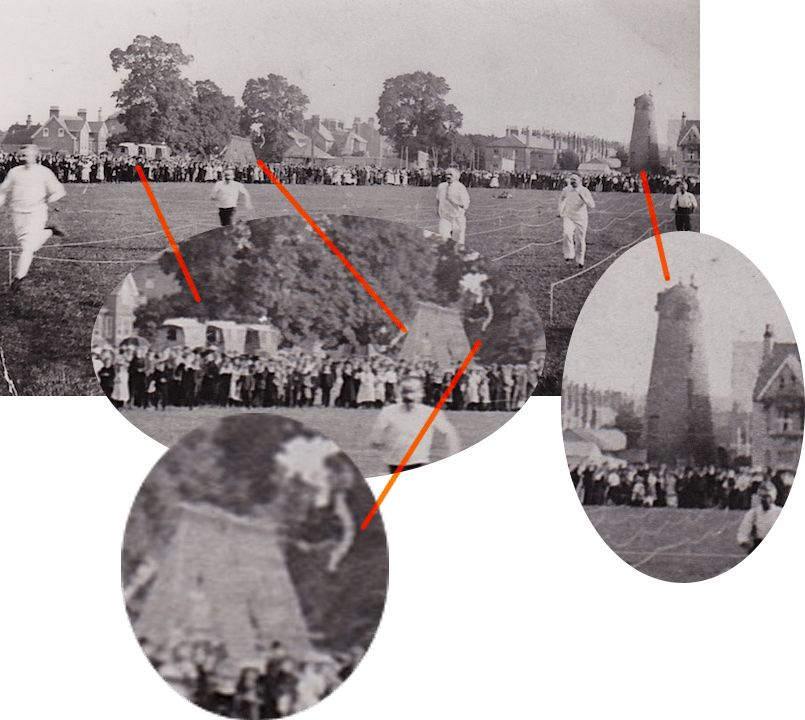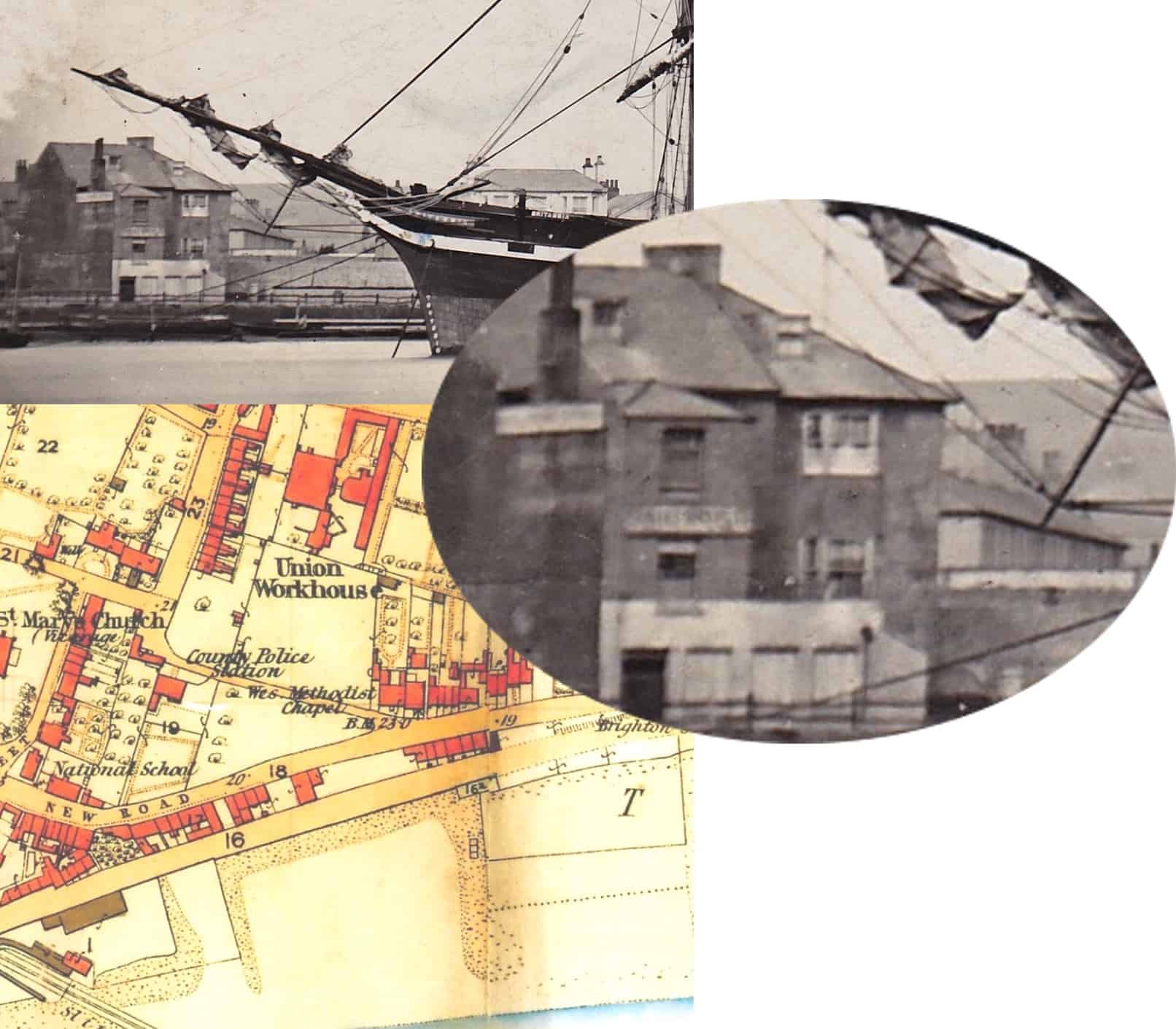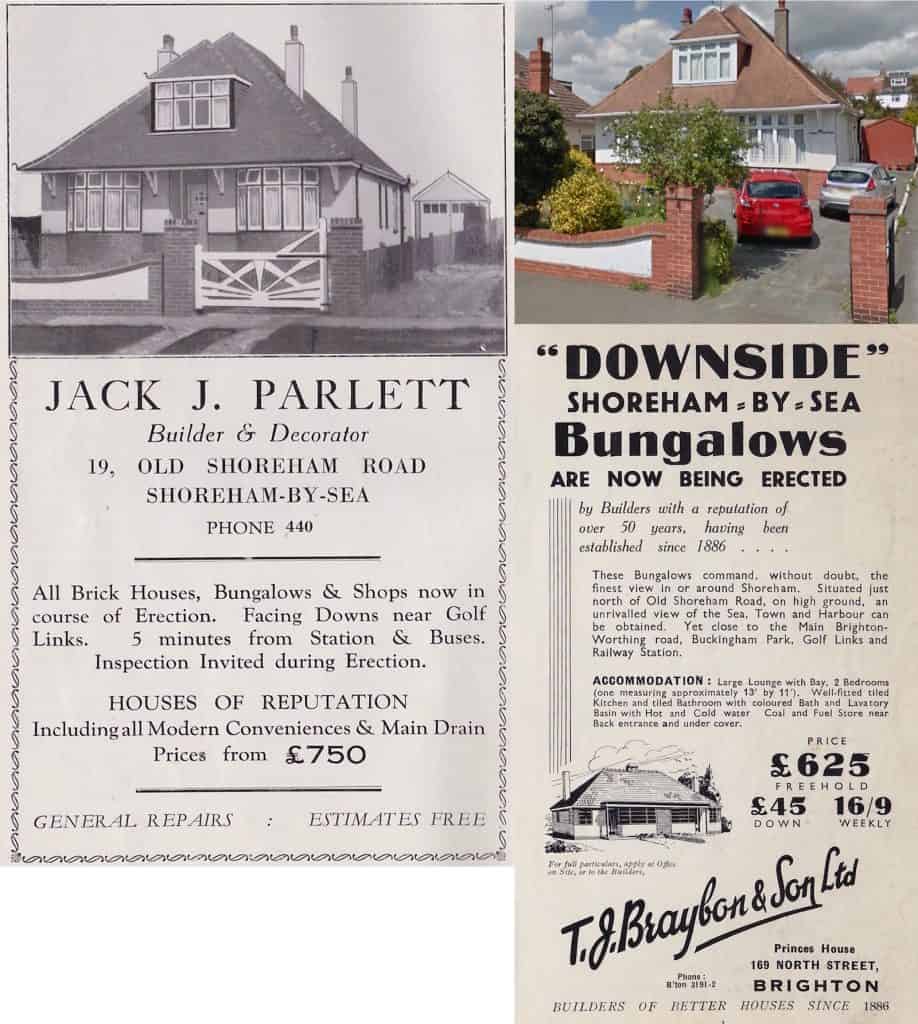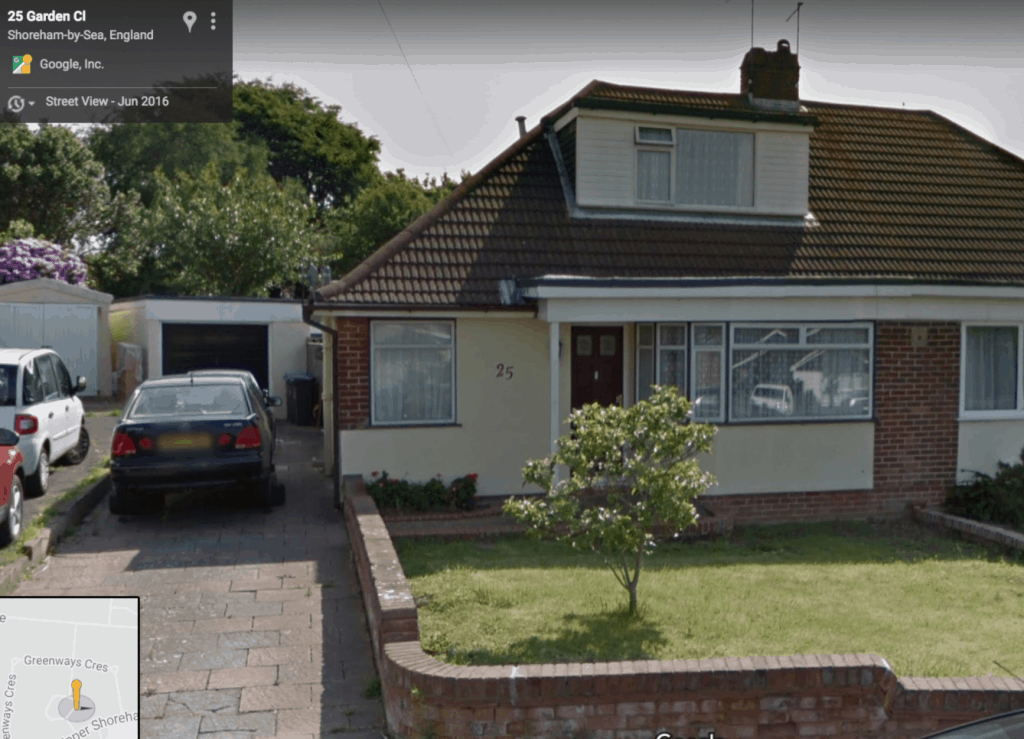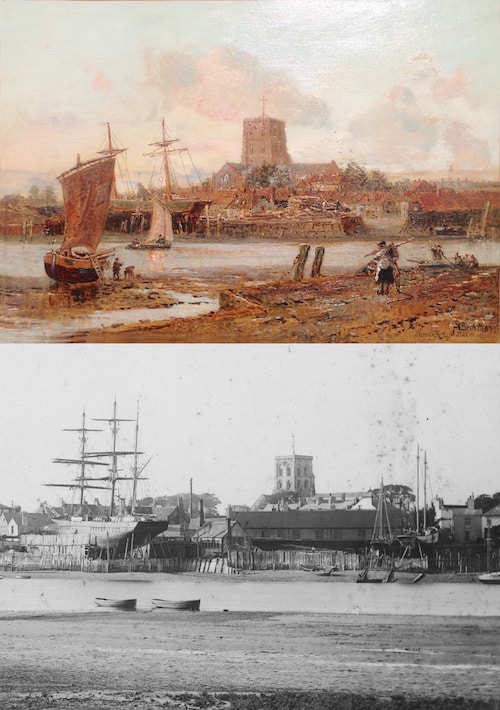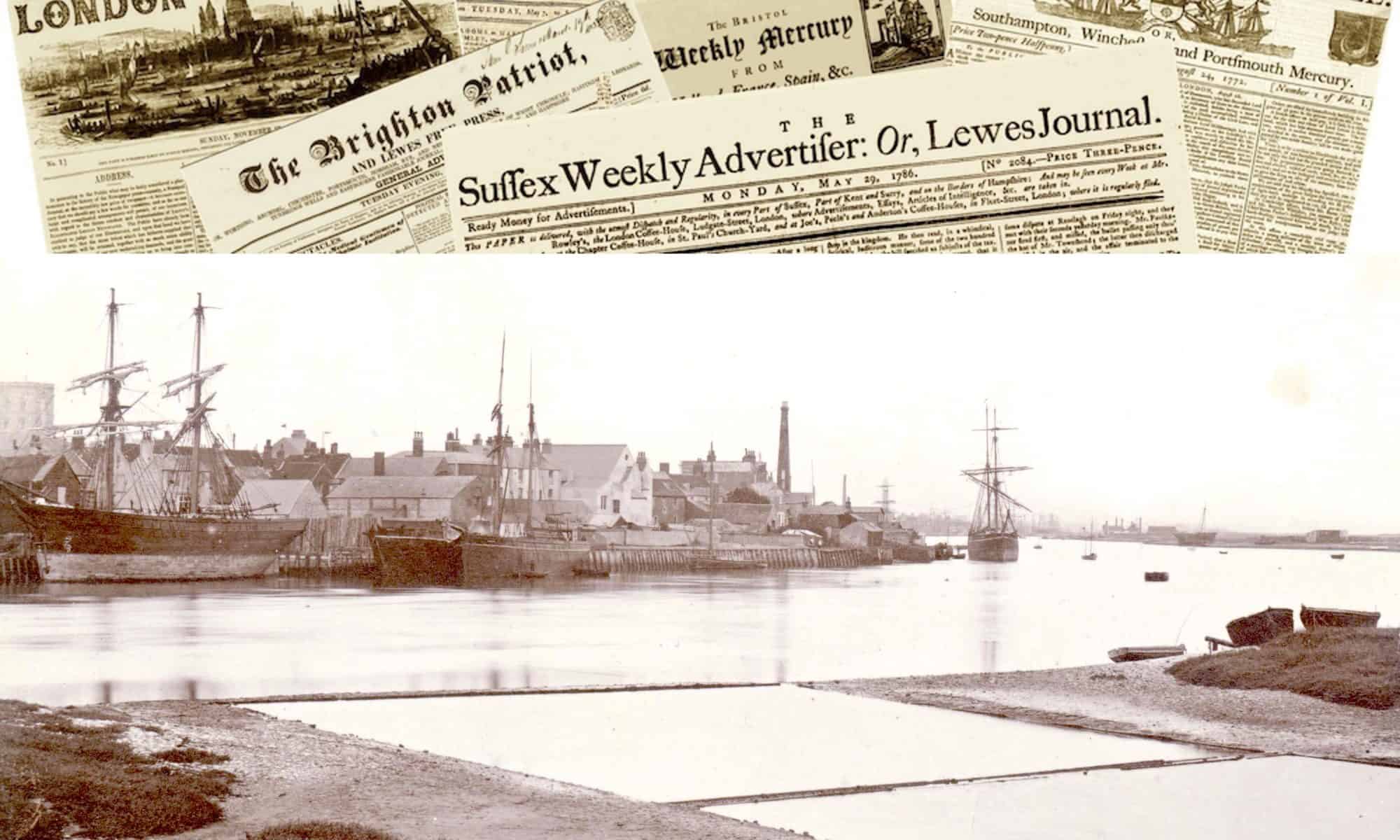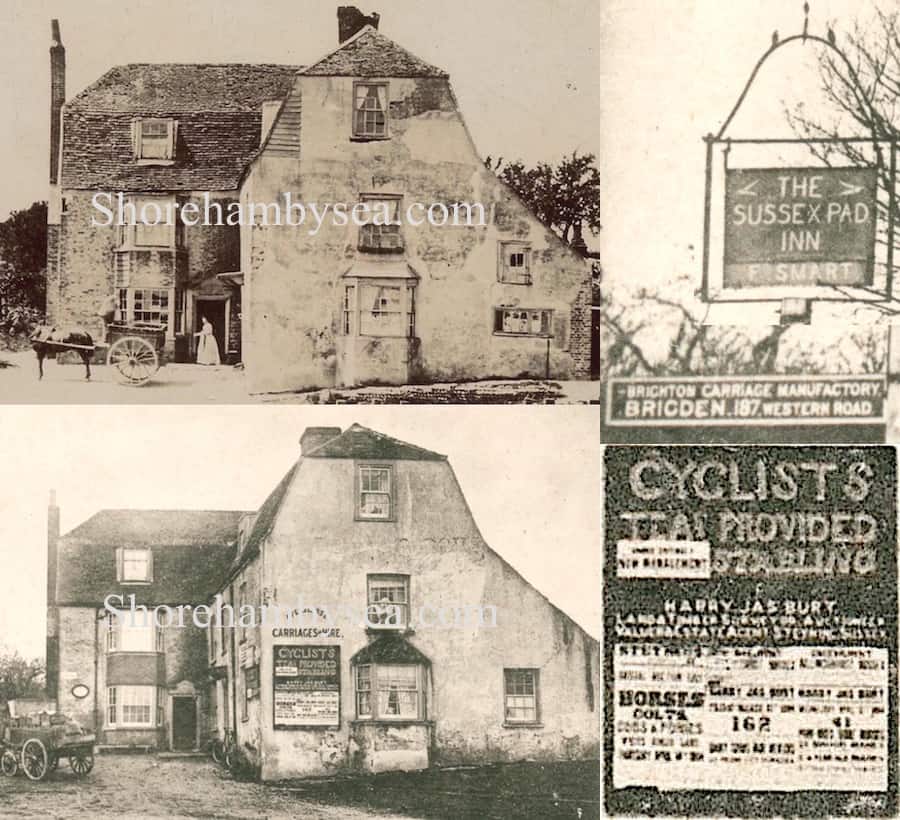
Just love the questions that old photos ask. The lower one is noted as circa 1903 – the top one is undated but despite it showing the building in a more dilapidated state it, and the lady’s style of dress, seems to indicate an older image perhaps and therefore a refurbished rendering in the lower image?
The cyclists advert suggests a landlord then (circa 1903) of Harry Jas (James) Burt (rather than what looks like Harry Jasbury) but with a small poster just above it appearing to include perhaps the words ‘New Management.’ The changing management theme is further indicated by the name ‘F.Smart’ appearing to have been recently added to the pub sign.
There is also a signpost pointing south indicating I guess the carriage works but why also Brigden at 187 Western Road when there were obviously others in that road? Someone with access to a Lancing directory of the period will have the answers


